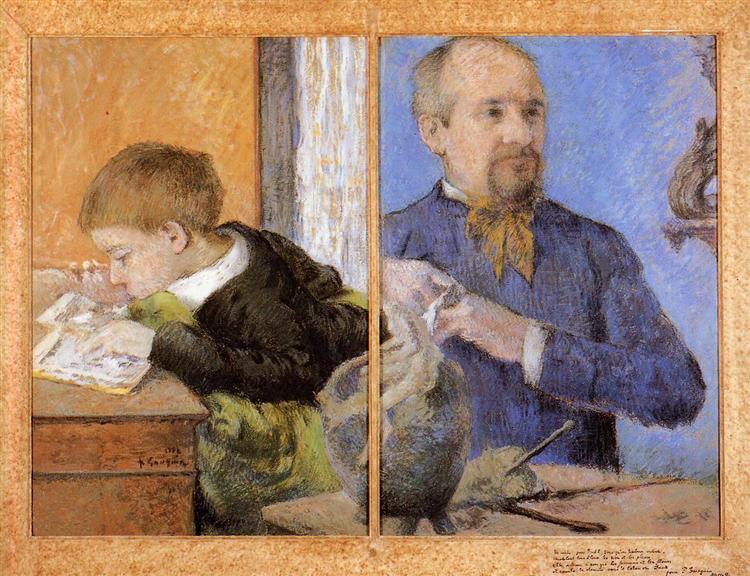Описание
The work "Aube, The Sculptor and His Son", painted by Paul Gauguin in 1882, is a fascinating example of the transition towards modern artistic practices that the author would begin to develop in his later works. In this painting, Gauguin delves into the search for the deeper meaning of the everyday and the familiar, which becomes a hallmark of his style.
The composition of the work shows a sculptor, whose symbolic zenith seems to be carrying out a work of intimate connection with his son. Gauguin chooses to represent the two characters in a clear and balanced arrangement, where the sculptor is shown in a meditative gesture, possibly contemplating his work or the nature that surrounds him. This scene encapsulates a moment of reflection, where the paternal figure takes center stage, generating a sense of stability and protection. The son, whose slight turn towards the father suggests both curiosity and trust, reinforces the significant emotional bond that underlies the work.
Gauguin's chosen palette is characteristic of his post-impressionist style, with a bold use of color. Earthy tones predominate, nuanced by greens and blues that evoke a connection with nature. This intentional use of color is not merely decorative; it becomes a vehicle for communicating feelings and moods. Through colors, Gauguin manages to impart a sense of harmony and serenity, although he also reflects an implicit tension between art and life. The brushstrokes are visible and loose, allowing the texture of the paint to contribute to the dynamism of the work.
This piece is set in a unique temporal context, as Gauguin, at this period in his career, was beginning to distance himself from the established conventions of academic art. References to sculptural tradition, as well as attention to the artist's family life and work, lend the work an air of introspection that anticipates the thematic exploration that will take place in later works. Gauguin's dedication to capturing the essence of the human being, his relationship to the environment and his creative work, are directly manifest in "Aube, The Sculptor and His Son."
Gauguin, often associated with a symbolic and decorative approach in his works, already shows signs of his interest in the search for greater meaning in human experience. This study of form and shape, as well as emotional content, can be seen as a precursor to his later explorations in places such as Polynesia, where the interaction of humans with their environment would be taken to new extremes.
In conclusion, “Aube, The Sculptor and His Son” is a work that encapsulates both Gauguin’s individual interests and the broader cultural context of the time. The painting not only illustrates the artist’s wandering and contemplation, but also serves as a meditation on the role of the creator and the relationship with the next generation. Its significance lies not only in its composition and color, but also in the deep emotional echo that resonates through time, reminding us of the duality of art as a reflection of life and as a means of personal transcendence.
KUADROS ©, a famous painting on your wall.
Hand-made oil painting reproductions, with the quality of professional artists and the distinctive seal of KUADROS ©.
Painting reproduction service with satisfaction guarantee. If you are not completely satisfied with the replica of your painting, we will refund 100% of your money.

